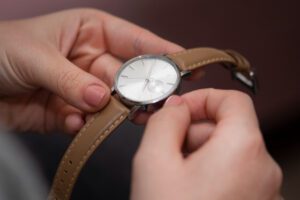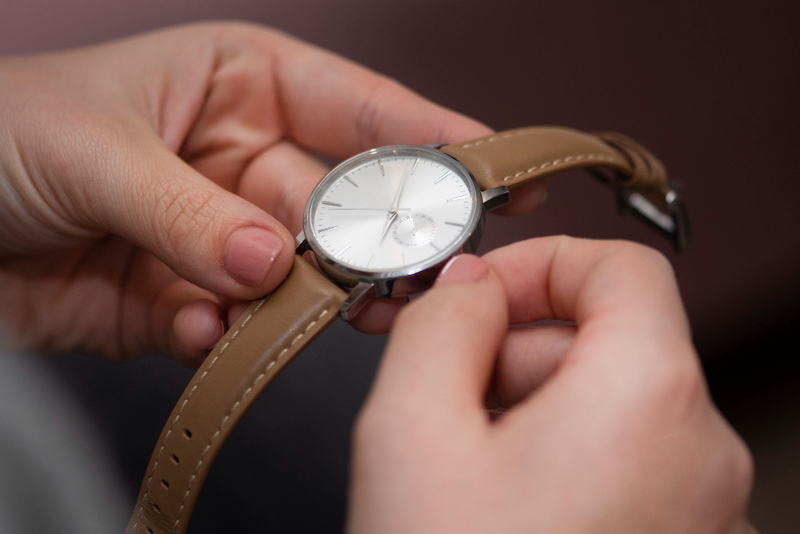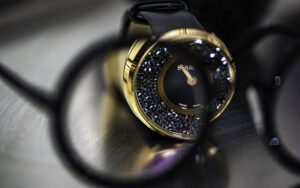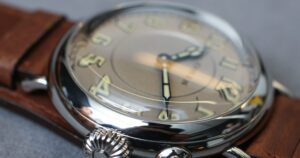Have you ever loved a product, only to see it disappear from the shelves when the company went out of business? Think about your old PalmPilot or that Gilbert Erector set you had as a kid. The same principle applies to watches.
But unlike the majority of collectors who spend years scouring flea markets and internet sites like Chrono24 or Watchfinder.com for their favorite brands of yesteryear, the watch enthusiasts in this article decided to take matters into their own hands.
Respected marques Czapek, Nivada Grenchen, Angelus, Airain, and Enicar spent years creating outstanding mechanical watches. But for one reason or another, most had closed up shop or faded into obscurity by the mid-to-late 1980s.
In Enicar’s case, the original company became insolvent in 1988, and the new iteration of the brand did not attempt to re-introduce the collection of tool watches for which it became famous – the Sherpa. This left ardent admirers of the vintage timepiece in a considerable pickle when trying to secure parts for Enicar watch repairs or add to their collection.
Regardless of how these watches disappeared, one fact was clear – interest in vintage timepieces had exploded by the early 2000s, opening the door for enterprising independent watchmakers to re-introduce these beloved brands to the world.
Let’s take a closer look at the five most intriguing comeback stories of the last decade, as selected by our watch repair and restoration enthusiasts here at Times Ticking:

1. Czapek & Cie.
Originally from Bohemia and Poland, talented watchmaker Franciscek Czapek emigrated to Switzerland in 1832, changed his name to François, and a few years later went into business with fellow Polish émigré Antoine Norbert de Patek in May 1839. Both men were accomplished watchmakers in their own right, and Patek, Czapek & Cie. created several high-quality timepieces for various nobility throughout Europe.
After ending their partnership in 1845, Czapek continued on his own, opening Czapek & Cie. boutiques in Geneva, at the Place Vendôme in Paris, and in Warsaw. He also held the coveted title of Watchmaker to Prince Napoleon III. Then, in 1869, Czapek and his business disappeared from the haute horlogerie landscape. Just like that, he and his famous watches were gone.
Nearly 150 years later, in 2012, Swiss businessman Harry Huhl set out to resurrect the Czapek brand with luxury market expert Xavier de Roquemaurel and esteemed watchmaker Sebastien Folloniér. The way they financed the relaunch was novel in the horology community – a crowdfunding campaign that would allow watch enthusiasts to invest and have a stake in the company. Essentially, the first financial partners for the born-again Czapek & Cie. would also be its first customers.
The watchmaker officially reopened in 2015 with its simple yet stunning Quai des Bergues collection, a manually wound mechanical with date and small seconds complications. The design takes its cue from one of François Czapek’s original pocket watches, and the collection is named after the street in Geneva where he opened his first boutique in 1845. Though initially viewed by the Swiss watch community as somewhat of a curiosity with limited potential, the brand quickly gained respect. Its Quai des Bergues No.33bis was awarded the Public Prize by the Grand Prix d’Horlogerie de Genève just one year after its introduction.
While Huhl and Folloniér have since moved on to other projects, de Roquemaurel has stayed on as Czapek’s CEO. In a 2022 interview with Crown Watch Blog, he said the three of them initially conducted extensive research to design watches that would capture the true “spirit of Czapek,” often imagining the man himself seated with them at the design table.
Today, this independent brand makes all of its watches in-house and features four collections, each paying homage to its Polish namesake in one way or another: Quai des Bergues, Place Vendôme, Faubourg de Cracovie, and its popular sports watch line, Antarctique. In 2022, the watchmaker had roughly 3,000 orders to deliver within the next 18 to 24 months. Judging by demand and price point (an entry-level Quai des Bergues costs around $20,000), this independent is doing quite well.
2. Nivada Grenchen
Watchmaker Jacob Schneider founded Nivada in 1926 in Grenchen, a town nestled at the eastern edge of Switzerland’s famous Watch Valley. The family company would spend the next 50 years as a successful pioneer in tool watch complications, from chronographs and bathometers to GMT bezels, tachymeters, and small seconds dials.
Nivada timepieces gradually rose in popularity throughout the 1930s and 40s as elegant, hand-wound Swiss mechanicals and expanded into the U.S. market in 1939 via a successful partnership with American watchmaker Croton. This is why vintage Nivada timepieces can bear several names, including Nivada Grenchen Croton, Croton, and Nivada Croton.
Nivada Grenchen found its niche in 1950 with the introduction of the Antarctic, its first waterproof automatic watch. The ruggedly-built timepiece later accompanied the U.S. Navy’s Deep Freeze I expedition to the South Pole in 1955-56 under the command of Rear Admiral Richard E. Byrd.
The grueling journey was a tremendously successful field test for the newly-minted Antarctic, as the watch endured extreme temperature fluctuations, harsh weather conditions, constant wear and tear, and “never lost a second,” according to one early Nivada ad.
In the two succeeding decades, the company would deliver other iconic pieces – the Chronomaster Aviator Sea Diver, Depthomatic, and Depthmaster – before succumbing to financial difficulties in the mid-1980s due to the Quartz Crisis. The company was sold twice before it landed under the umbrella of a Mexican firm and re-registered in Mexico as Nivada Swiss.
Roll the clock forward to 2018. Enter Guillaume Laidet, a vintage enthusiast, and his business partner Remi Chabrat, the CEO of the Montrichard Group. Impressed with the 1963 Chronomaster and fresh from selling off his first successful watch venture, William L. 1985, Laidet set his sights on restoring Nivada Grenchen to its former glory.
At the time, Nivada Swiss created mainly quartz watches exclusively for the Mexican market. With Chabrat already working with Nivada’s Mexican parent company, the stars seemed aligned for the two entrepreneurs to bring back Nivada Grenchen as the respected mechanical watchmaker it once was.
After securing the rights to the Nivada Grenchen name and its voluminous back-catalog of discontinued timepieces, Laidet and Chabrat went right to work putting out re-editions of the brand’s most successful models, the Chronomaster, Antarctic, and Depthmaster.
Today, the watchmaker’s produces only 4,000 watches per year. In the horology world Nivada Grenchen is considered a microbrand, one that doesn’t manufacture its movements in-house and has a limited annual production. Instead, Nivada timepieces employ automatic and manual movements from Swiss powerhouses like Sellita and Soprod, and Seiko’s VK64 for its new Datomaster Mecaquartz (a hybrid battery-operated quartz and mechanical chronograph movement).
“We have the three pillars of the collection [in place, and] now we can also create new dials, executions, and special editions,” Laidet explained in an interview with Fratello Watches earlier this year. Some creations that have already hit the market include the F77 automatic series, a limited edition Fratello x Nivada Grenchen Racing Chronograph, released this past summer, the Chronoking “Paul Newman” Orange, and the new 3-6-9 tropical dial for the Super Antarctic.
Much to the delight of vintage collectors everywhere, Nivada Grenchen doesn’t have any other plans than to create faithful re-editions of classic Nivada timepieces with cutting-edge mechanical and quasi-quartz movements. The large original catalog has plenty of other original Nivada designs and styles, so we can likely expect more exciting things from this brand in the future.
One of the primary aspects of Czapek’s and Nivada’s success is their ability to offer consumers Swiss timepieces that carry 21st-century functionality in case designs that hearken back to the watchmaker’s roots. In addition, Nivada watches are reasonably priced (generally under $2,000), and several Czapeks remain an affordable luxury option for those looking for a more haute horlogerie item under $20,000.
Be sure to check out our next blog, where we’ll finish this feature on comeback watch brands with our three remaining favorites: Angelus, Airain, and the all-new Sherpa.
https://youtu.be/vVkTMAmPHAU




